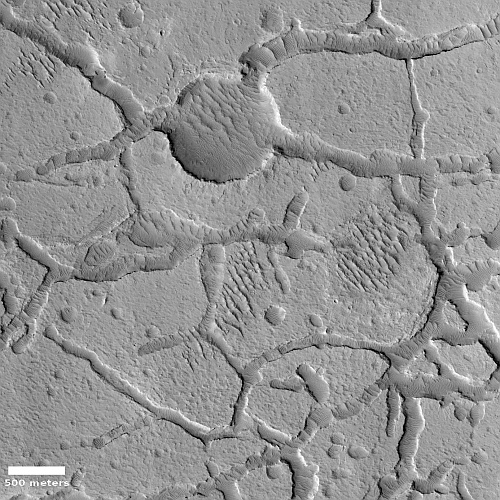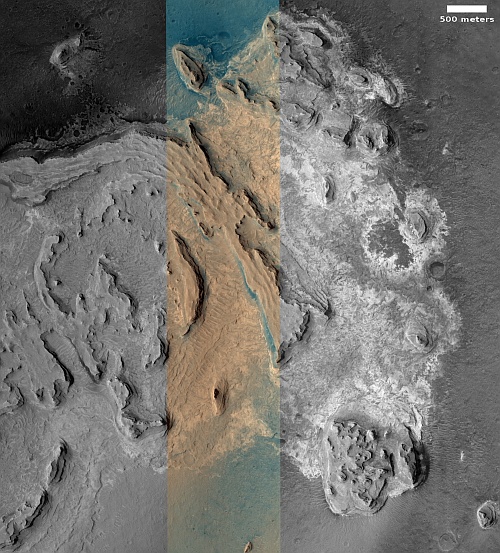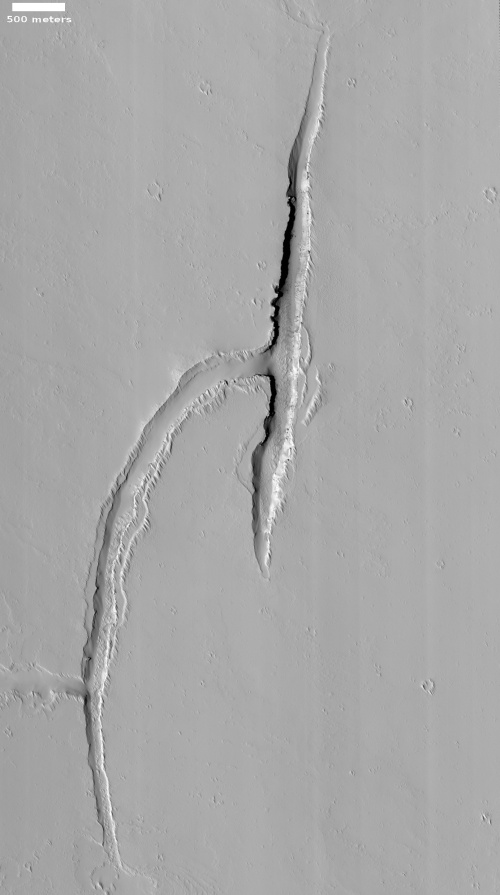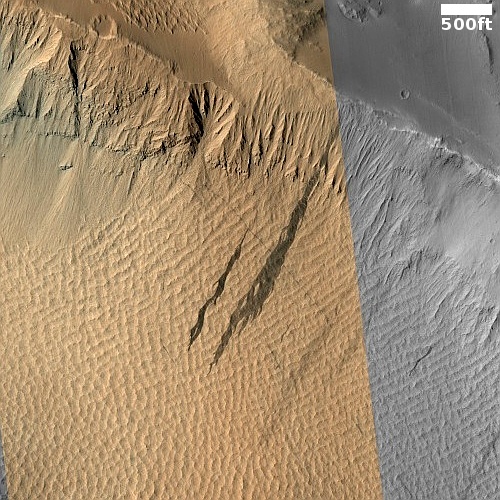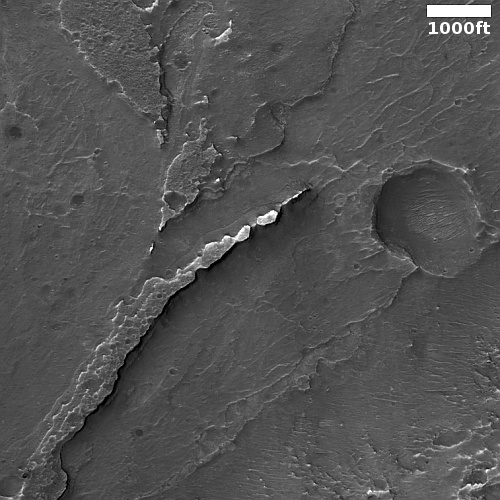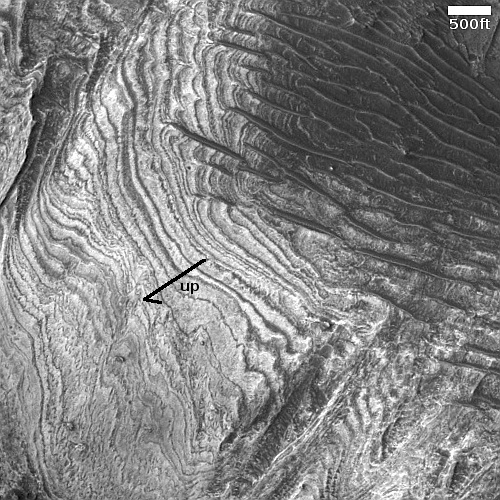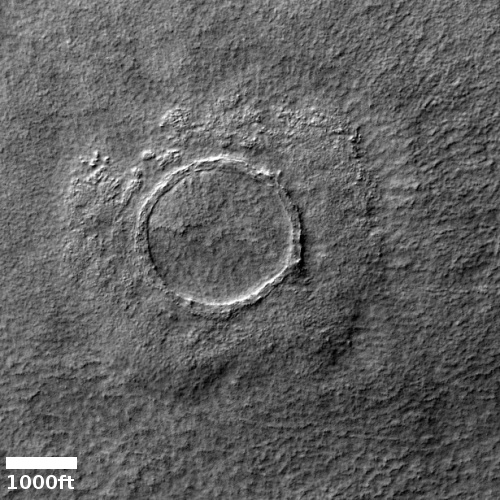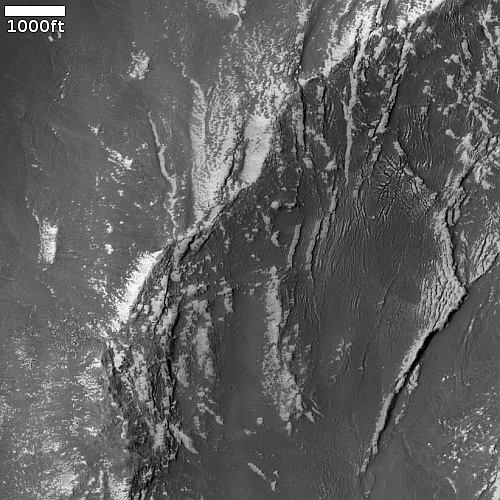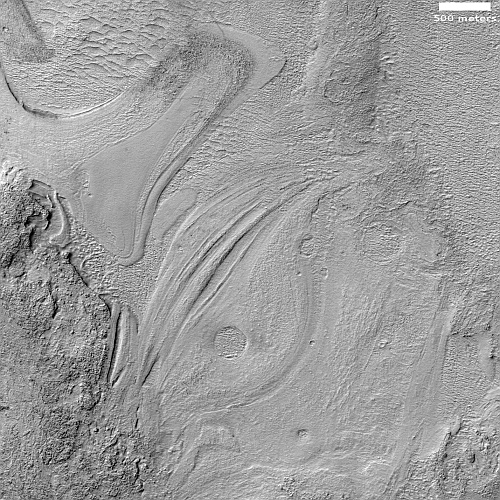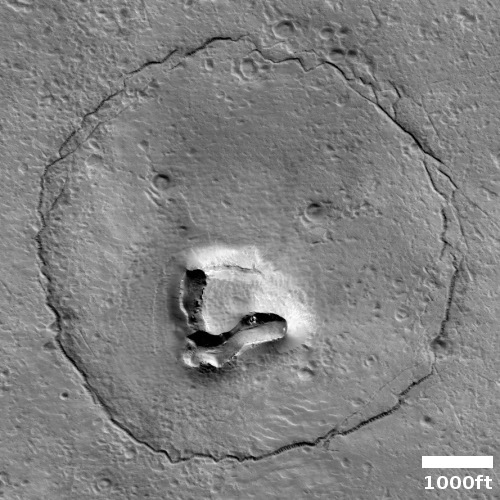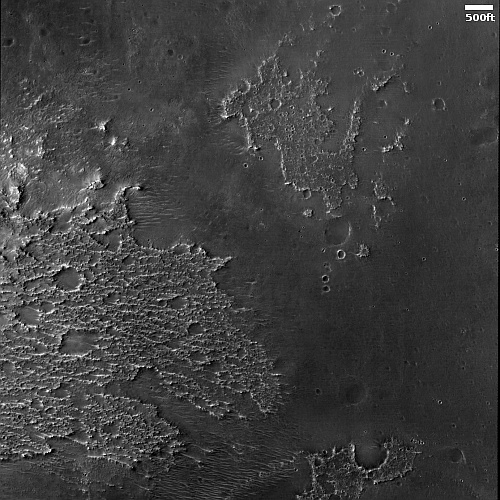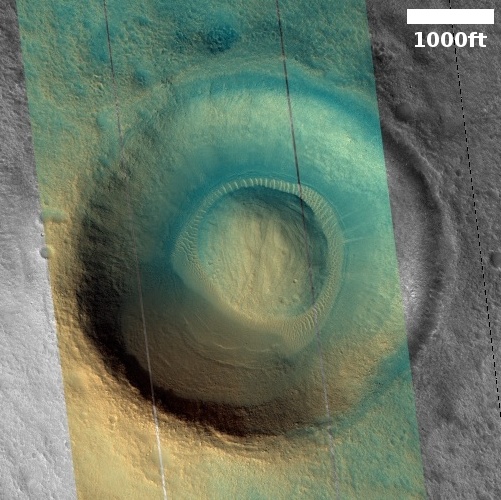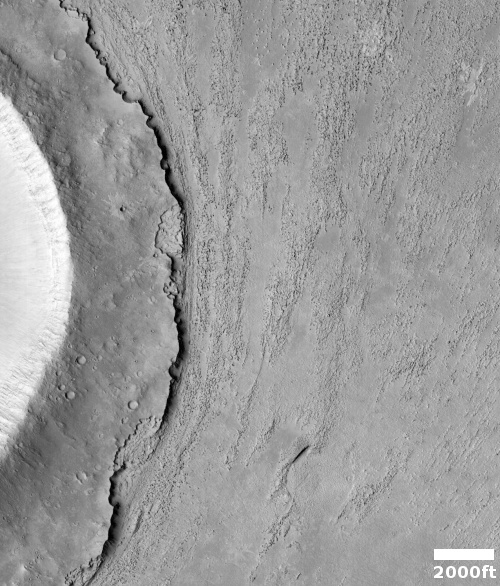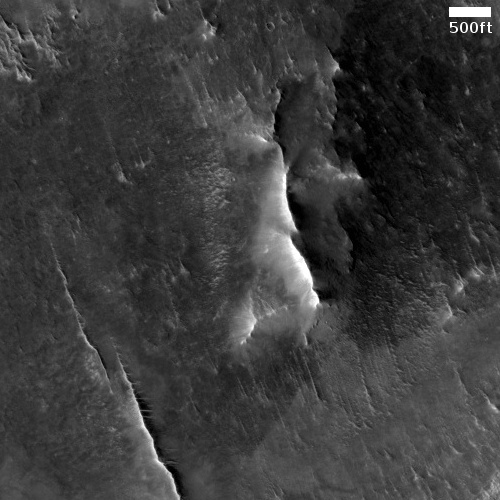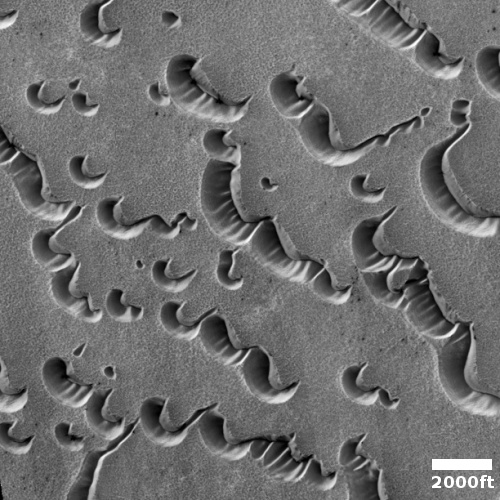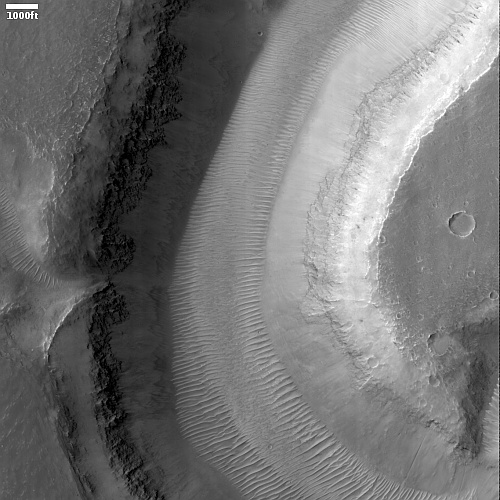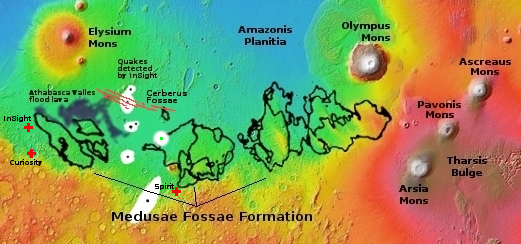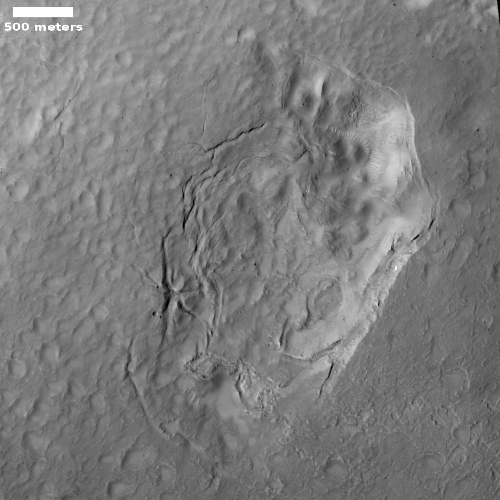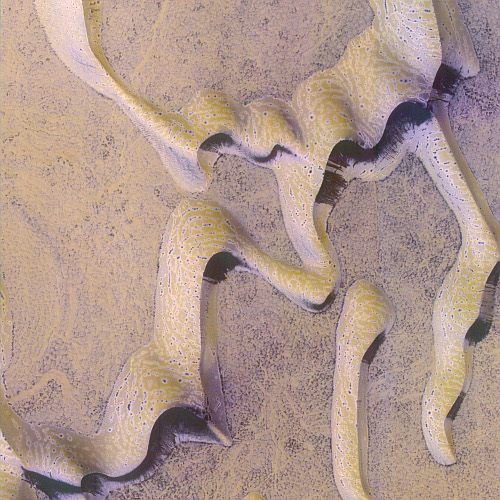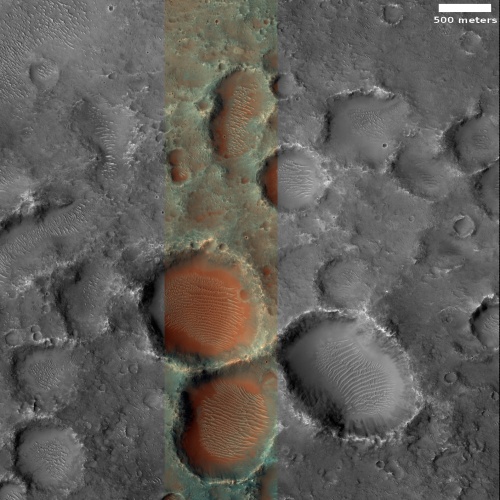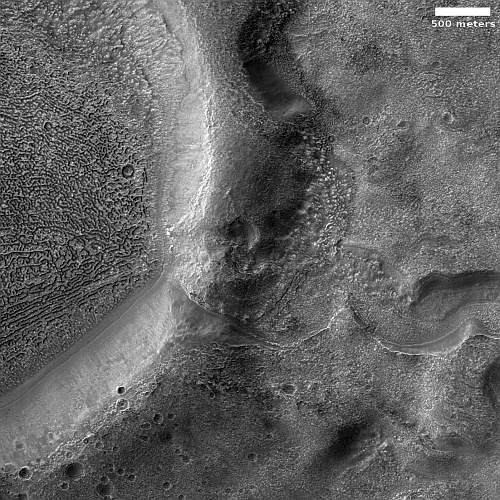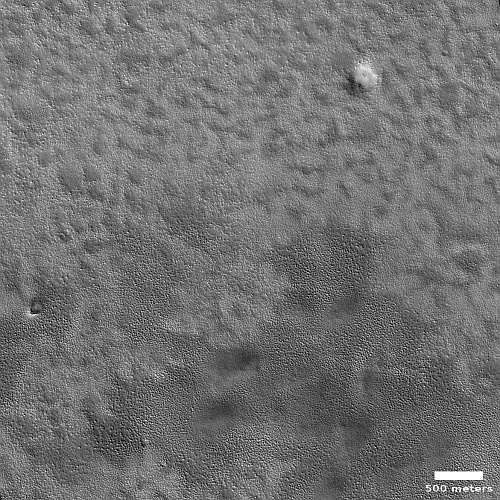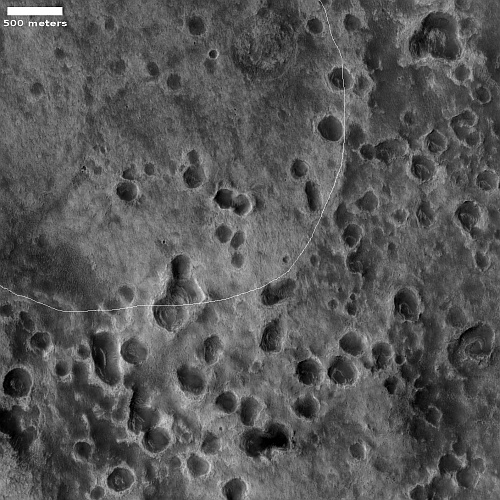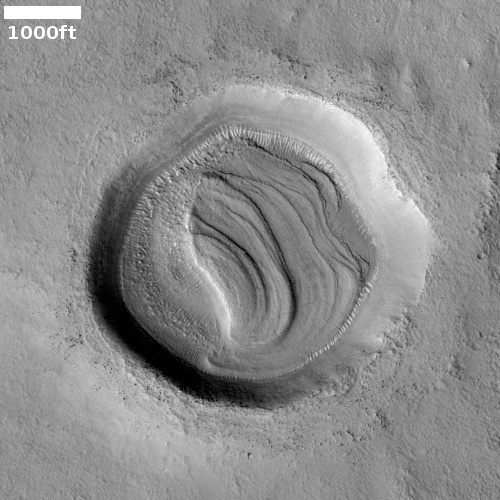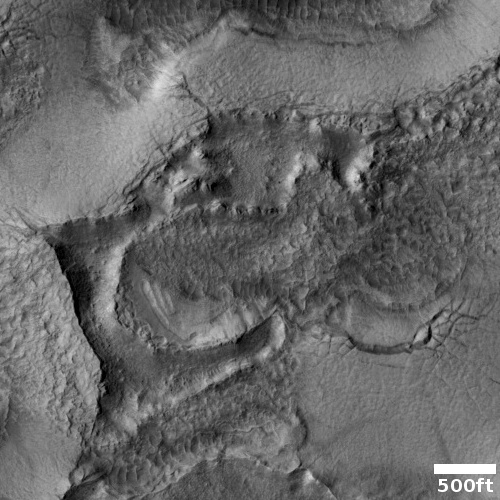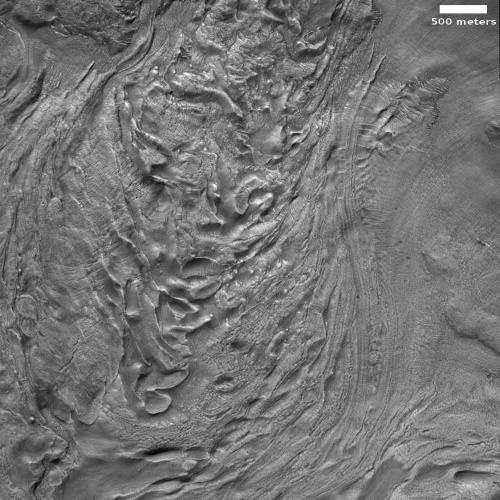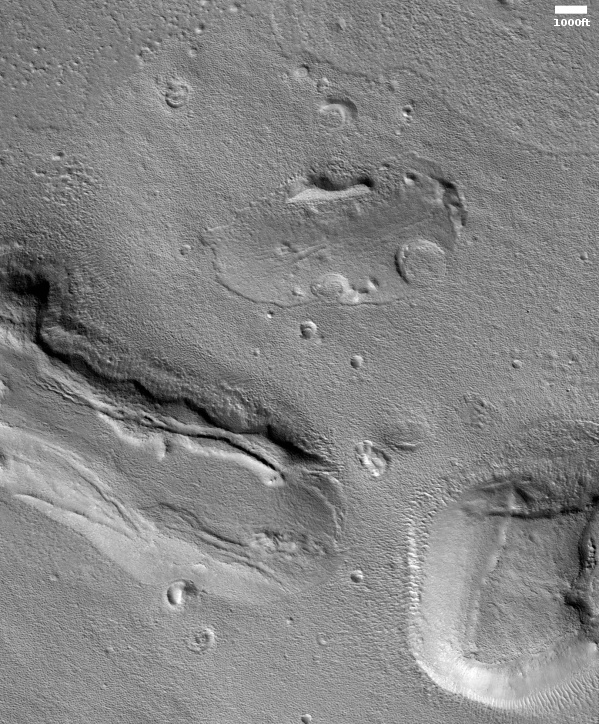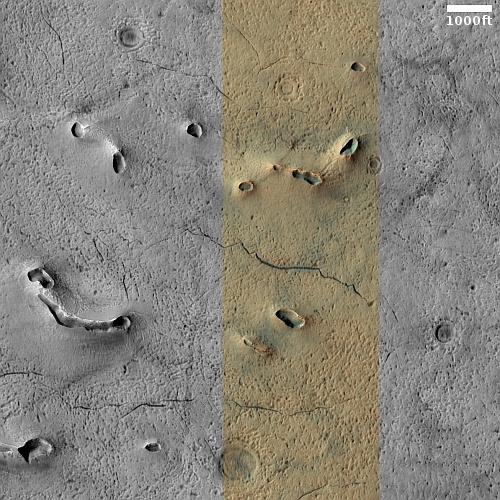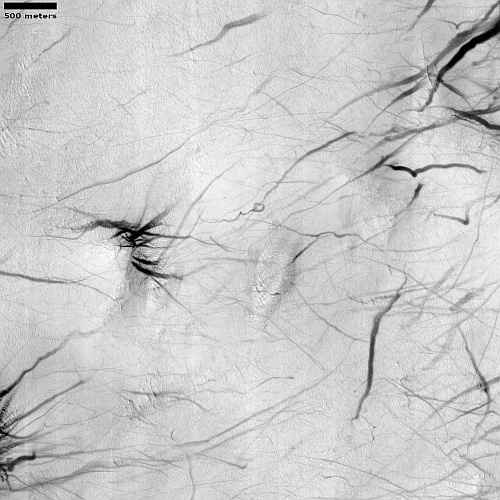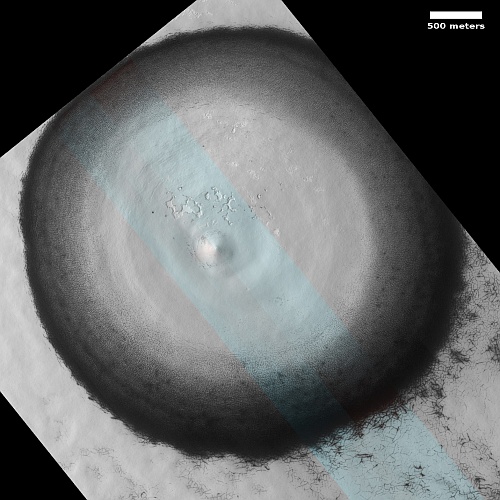Cracked ash-filled Martian terrain
Cool image time! The photo to the right, cropped, reduced, and sharpened to post here, was taken on September 26, 2022 by the high resolution camera on Mars Reconnaissance Orbiter (MRO). The science team labeled this “Possible Pit,” but other than a small dark stain on the rim of a crater north of the section cropped to the right, I could find nothing that even closely resembled a pit. More likely the scientists were referring to the large circular depression in the top center of this picture. It does not at first glance look like a crater, as it has no obvious rim. In fact, almost none of the circular depressions in this image look like craters, as almost none have uplifted rims.
However, it is not clear what caused these dust-filled fractures as well as the image’s many circular depressions. The location, as indicated by the overview map below, does not really help.
» Read more
Cool image time! The photo to the right, cropped, reduced, and sharpened to post here, was taken on September 26, 2022 by the high resolution camera on Mars Reconnaissance Orbiter (MRO). The science team labeled this “Possible Pit,” but other than a small dark stain on the rim of a crater north of the section cropped to the right, I could find nothing that even closely resembled a pit. More likely the scientists were referring to the large circular depression in the top center of this picture. It does not at first glance look like a crater, as it has no obvious rim. In fact, almost none of the circular depressions in this image look like craters, as almost none have uplifted rims.
However, it is not clear what caused these dust-filled fractures as well as the image’s many circular depressions. The location, as indicated by the overview map below, does not really help.
» Read more

